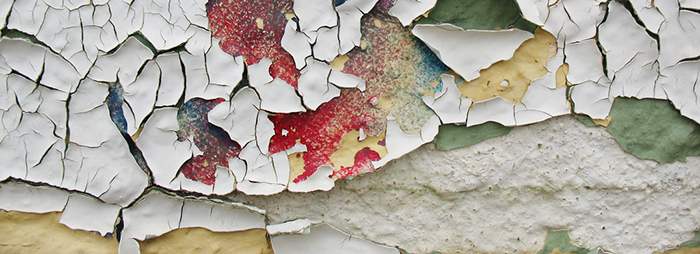Invisible Light Can Reveal Bad Paint Jobs, Perhaps Skin Cancer

Rahman and Rahman have created a device that can measure and analyze layers of paint or living tissue for defects using electromagnetic radiation.
Image credits: calebkimbrough via Flickr
(Inside Science) -- If the paint job on your car is not applied properly, rust happens. If a cell in your skin behaves improperly, cancer can happen.
An instrument developed by a father-son team in Pennsylvania can measure whether the layer of overcoat meant to protect the paint on a car was sprayed properly. The same technology can be used to analyze archaeological artifacts and perhaps detect skin cancer, the inventors said. It can also help manufacture microchips without defects.
Anis Rahman, and his son, Aunik, founders of Applied Research and Photonics, Inc. in Harrisburg, work in a relatively new field of optics that makes use of terahertz frequency radiation, the invisible electromagnetic radiation between infrared and microwave radiation.
"It solves a number of problems," said Anis Rahman. None of the current technologies make precise measurements as well, he said, since technologies using infrared or visible light can only see the surface.
The Rahmans made a presentation of their device this week at the Conference on Lasers and Electro-Optics in San Jose, California.
The device -- which the Rahmans have patented -- is a kind of reflectometer: It sends out terahertz radiation at an object and measures the light reflected off it. Unlike radar, it measures the strength of the reflection, not distance.
It uses a generator to produce the radiation, as well as a camera and computer software for analysis.
By noting the differences in the reflected light, it can determine the thickness of layers of material, like the layers of paint. It can make measurements of very thin layers down to tens of nanometers (a million times smaller than the head of a pin), but also can estimate the size of particles embedded in the paint down to 25 nanometers.
It can detect a line drawn on a piece of paper buried under more paper.
The technology leaves the material studied undamaged and works with any multilayered system.
Most automobiles are decked with several layers of paint, including a base coat, a primer, the main paint, and an over layer. Some of the paint contains tiny flakes of materials such as mica, which adds to the visible characteristics of the paint job.
The rust protection painted onto an automobile is an over layer on the base paint. If the over layer becomes absorbed into the base layer, it will no longer protect the car from rust. The reflectometer will be able to show whether the over layer has seeped into the base layer, Anis Rahman said.
Manufacturers can also use the technology to see how paint reacts to different surfaces and materials, he said. It should also determine if paint contains lead. Terahertz reflectometery can also be used to find defects in silicon chips during manufacturing.
The technology is also helpful in analyzing antiques. A friend of the elder Rahman used the device to measure the layers of paint on a piece of porcelain pottery from the 17th century. Because it leaves the object studied unchanged, it could be used to analyze old works of art, including paintings, to determine how the artist worked and perhaps determine the authenticity of a piece.
Terahertz radiation is non-ionizing, and harmless, potentially making the technology all the more useful in medicine, particularly in skin cancers such as melanoma.
Anis Rahman said that since cancer cells are layered differently from normal cells, it would be possible to identify them with the reflectometer. At present that works only with biopsy samples, but could eventually be extended to examining features on patients’ skin, especially if used in conjunction with spectroscopy, he said.
The company has an ongoing collaboration with a subsidiary of the Science Applications International Corporation, under a technology partnership program from the National Cancer Institute.
The Rahmans' technology also has uses in security, they claim. It can spot an object hidden inside a bag.
Researchers at the University of Washington have used a similar device to measure the depth of burn wounds on laboratory mice.
The relatively new technology is getting considerable attention with manufacturers. The Rahmans' device seems important, said Yves Bellouard, an associate professor of mechanical engineering at the Eindhoven University of Technology in the Netherlands.
"It seems to be a really hot topic for car manufacturers in particular," he said.

